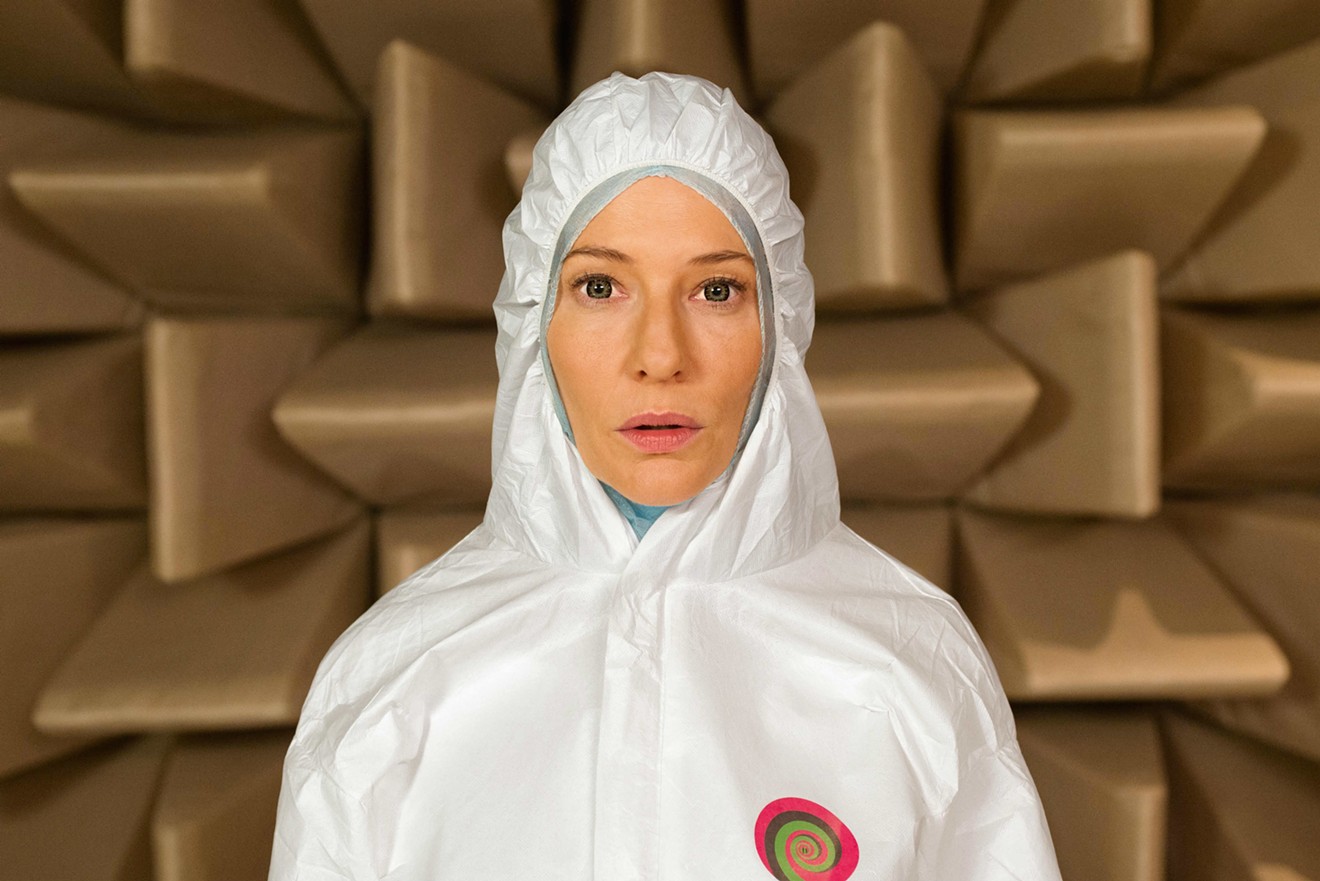Who knew Cate Blanchett wanted to be Tracey Ullman? That's probably not the reaction director Julian Rosefeldt hopes will be stirred by this rigorous series of monologues, stitched together from more than 50 artistic and political manifestos and performed by Blanchett as 13 characters. But, like Ullman, Blanchett takes the external markers of her characters (costumes, hair, makeup) and internalizes a persona for each, imbued with a distinct accent and body language. It's the exercise of impersonation as a process of revelation, and it’s marked by a surprising lightness.
That puckish humor isn't apparent right away. Manifesto was shot in Berlin, and the first scenes establish it as an aesthetic companion to Wim Wenders’ Wings of Desire, that portrait of a walled-in metropolis. Rosefeldt and cinematographer Christoph Krauss employ many overhead shots (the angels' point of view for Wenders), frame modern architecture with formalist symmetry, and lovingly glide the camera over people engaged in everyday activities, all while maintaining an emotional distance. This open Berlin still feels contained, its population honeycombed into steel and glass hives.
The creeping sense of dislocation tips into science-fiction territory when Blanchett appears in a beautifully wrought sterile environment wearing a white hazmat coverall, her voice echoing on the PA system as she recites the manifestos of early Soviet artists extolling suprematism (imagery based on geometric forms) and constructivism (a utilitarian approach to artistic production). Rosefeldt doesn't identify the movements or authors of each manifesto until the end credits, so that Blanchett’s performances serve as our guide in relating the words to the imagery.
Even as Rosefeldt mines intellectual elitism, he reveals a disdain for pretension in the film’s centerpiece monologue. Blanchett's speaker addresses a well-heeled, buttoned-up graveside audience. With black French netting framing her face like a fencing mask, she ferociously espouses Dadaism in a tone that suggests she's excoriating the dead in the guise of praise. Dada at a funeral is an inspired contrast, puncturing the kind of polite ritual that stifles messy grieving with the radical art of nonsense inspired by those lost to the carnage of World War I.
Manifesto originated as individual pieces of a film installation. Condensing it into a 95-minute narrative with editor Bobby Good, Rosefeldt emphasizes small moments, like the tiny puffs of exasperation exuded by bored kids as their conservative mother recites “I Am for an Art” (sculptor Claes Oldenburg’s pop-art manifesto) as the very long grace before a meal. (Blanchett's husband, Andrew Upton, and their three towheaded sons play her family.) The actress is equally committed, regardless of whether content and context click, but she soars when they do. The discussion of conceptual art and minimalism by a TV-news anchor and a correspondent (both Blanchett) perfectly captures the clipped cadence of information being batted back and forth between professionals. Back to you, Cate.
[
{
"name": "Air - MediumRectangle - Inline Content - Mobile Display Size",
"component": "19274298",
"insertPoint": "2",
"requiredCountToDisplay": "2"
},{
"name": "Editor Picks",
"component": "17482312",
"insertPoint": "4",
"requiredCountToDisplay": "1"
},{
"name": "Inline Links",
"component": "18711090",
"insertPoint": "8th",
"startingPoint": 8,
"requiredCountToDisplay": "7",
"maxInsertions": 25
},{
"name": "Air - MediumRectangle - Combo - Inline Content",
"component": "17482310",
"insertPoint": "8th",
"startingPoint": 8,
"requiredCountToDisplay": "7",
"maxInsertions": 25
},{
"name": "Inline Links",
"component": "18711090",
"insertPoint": "8th",
"startingPoint": 12,
"requiredCountToDisplay": "11",
"maxInsertions": 25
},{
"name": "Air - Leaderboard Tower - Combo - Inline Content",
"component": "17482313",
"insertPoint": "8th",
"startingPoint": 12,
"requiredCountToDisplay": "11",
"maxInsertions": 25
}
]











